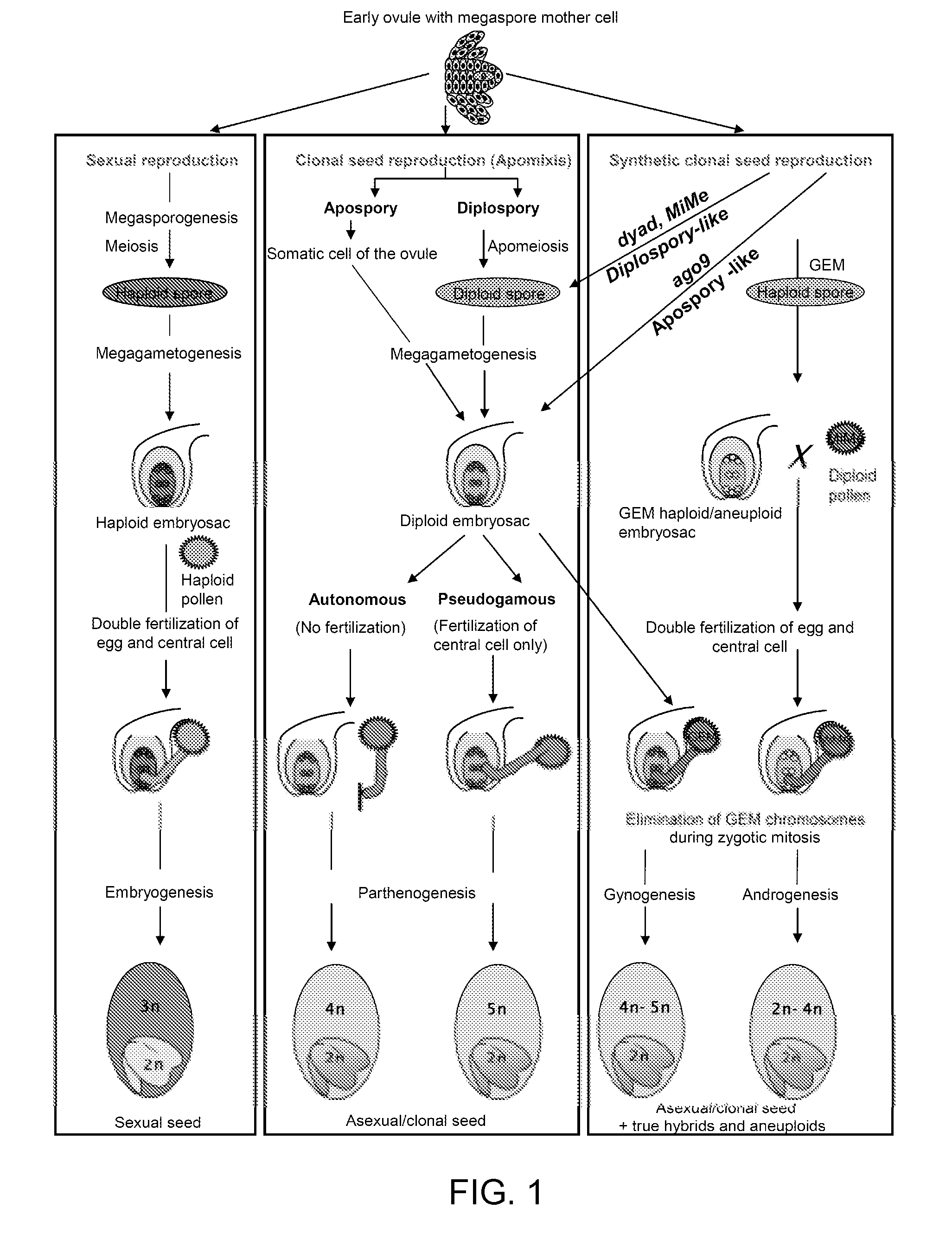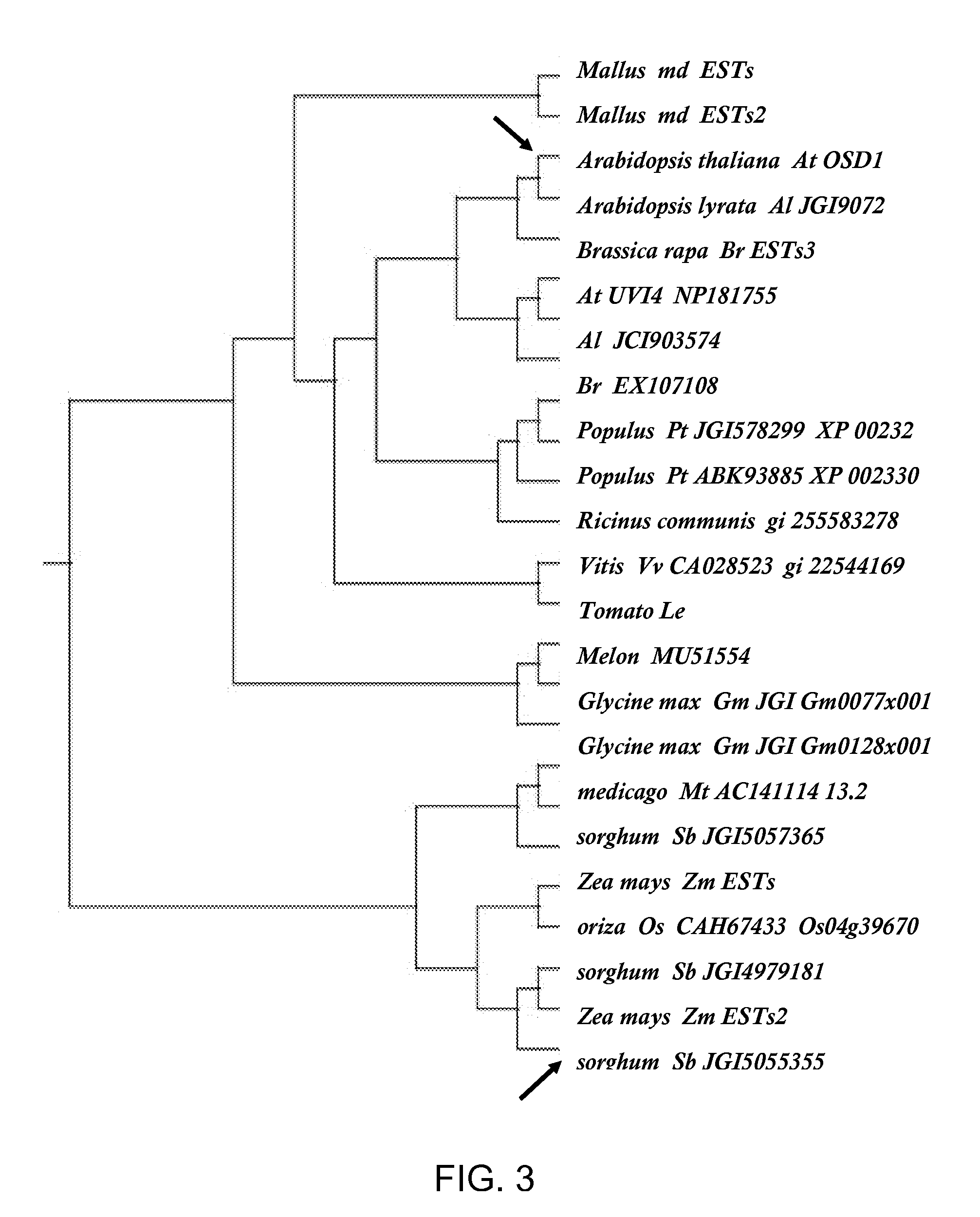Synthetic Clonal Reproduction Through Seeds
a technology of synthetic clone and seed, applied in the field of synthetic clone reproduction through seeds, can solve the problems of difficult cross-crossing with female mutants, failed attempts to introduce this trait by conventional breeding, etc., and achieve the effect of improving fertility and seed viability
- Summary
- Abstract
- Description
- Claims
- Application Information
AI Technical Summary
Benefits of technology
Problems solved by technology
Method used
Image
Examples
Embodiment Construction
[0026]FIG. 1 illustrates an overview of sexual, asexual development and provides a comparison to an exemplary synthetic clonal reproduction pathway of this invention. Nucellar cells of the ovule are plastic and can transdifferentiate to execute different cell fates, leading to either sexual or asexual seed development.
[0027]As illustrated in FIG. 1 (left column, sexual development), a subepidermal cell in the early ovule differentiates into an archesporial cell, which at the initiation of meiosis is called the megaspore mother cell (MMC). Sexual development involves three major events:
1) Megasporogenesis: The formation of a megaspore from the archesporial cell of the ovule by meiosis.
2) Megagametogenesis: The formation of an embryo sac (female gametophyte) by the mitotic division of the haploid megaspore.
3) Double fertilization. One sperm cell fuses with the egg cell to form the zygote (2n) and the other sperm cell fertilizes the central cell to form the triploid (3n) embryo nourish...
PUM
 Login to View More
Login to View More Abstract
Description
Claims
Application Information
 Login to View More
Login to View More - R&D
- Intellectual Property
- Life Sciences
- Materials
- Tech Scout
- Unparalleled Data Quality
- Higher Quality Content
- 60% Fewer Hallucinations
Browse by: Latest US Patents, China's latest patents, Technical Efficacy Thesaurus, Application Domain, Technology Topic, Popular Technical Reports.
© 2025 PatSnap. All rights reserved.Legal|Privacy policy|Modern Slavery Act Transparency Statement|Sitemap|About US| Contact US: help@patsnap.com



